Japanese Zen gardens
Carefully positioned rocks, gravel meticulously raked to form spiral or wavy patterns, and sparse vegetation – these are the defining features of Japanese Zen gardens.
Otherwise known as karesansui (枯山水, dry landscape gardens) or rock gardens, Japanese Zen gardens are all about capturing the essence of nature in its simplest, abstract form. When arranged right, these gardens can facilitate meditation, as they have done for Buddhist monks for centuries.
If you ever find yourself needing a quiet afternoon retreat after squeezing through crowds at popular tourist spots, here are 10 Japanese Zen gardens that are guaranteed to help you achieve inner peace.
– Kyoto Prefecture –
1. Ryōanji
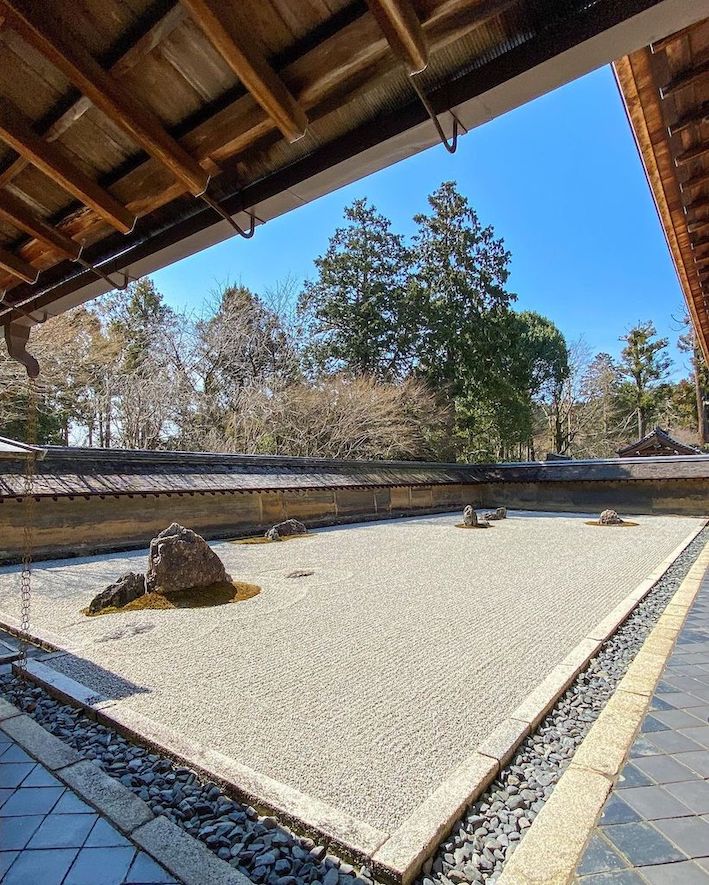
Image credit: @spvjorn
Visitors flock to get a glimpse of the splendor of Kiyomizu-dera and Kinkakuji when they visit Kyoto, but Ryōan-ji is the place to be for a quiet retreat. Known to be Japan’s most famous Zen garden, the rock garden within the temple is widely considered to be one of the most exemplary examples of karesansui.
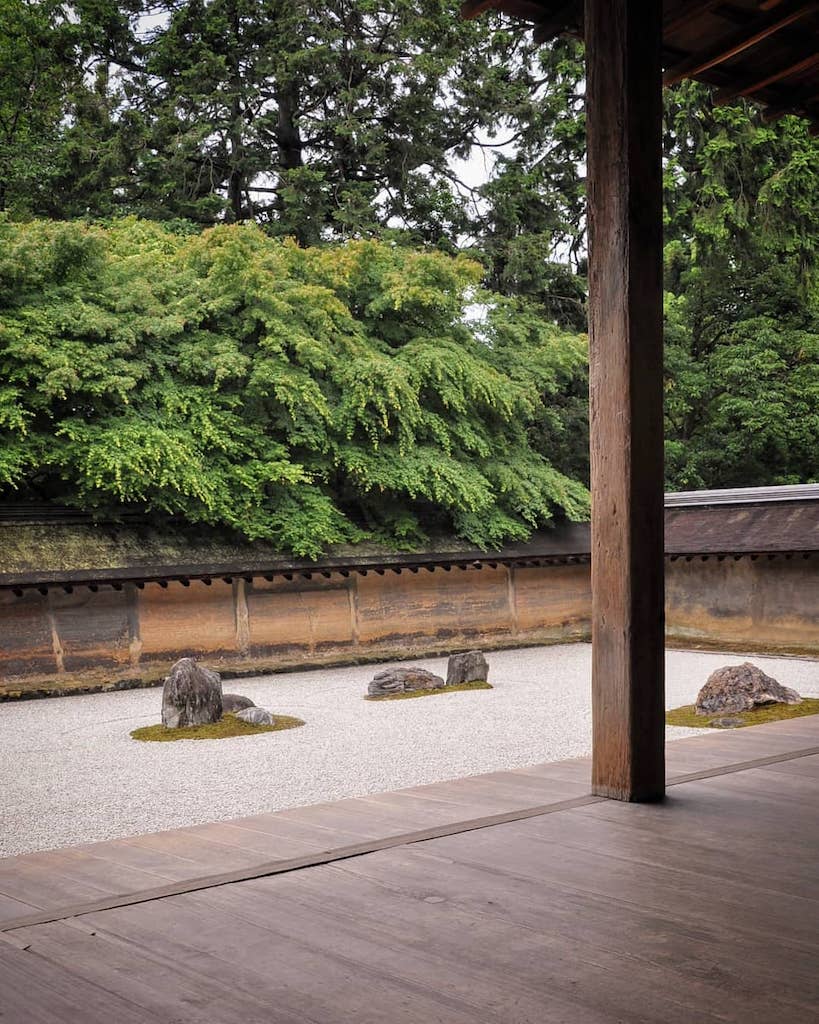
Image credit: @kyoto_channel
The origin and meaning of the rock garden in Ryōan-ji is shrouded in mystery, but there have been many interpretations by historians and artists over the years. Some see it simply as an abstract arrangement of natural elements, while others find deeper meaning and believe that the garden’s layout conjures an image of a tiger carrying a cub across the sea.
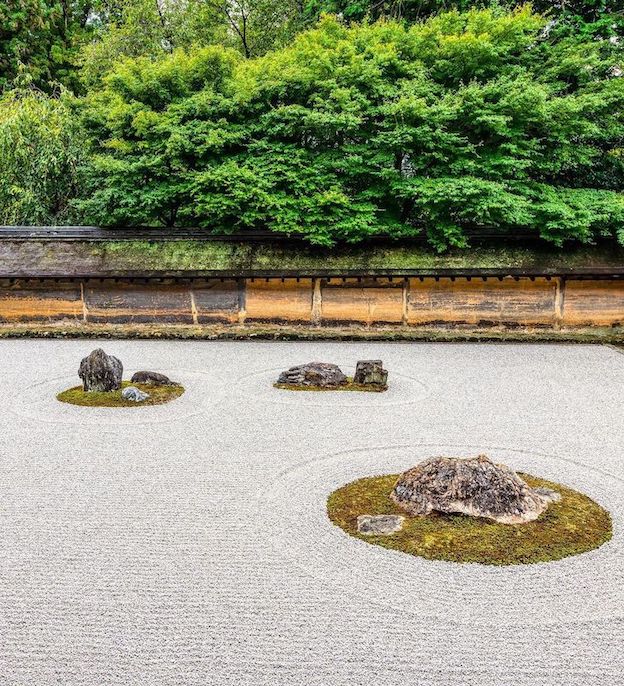
Image credit: @ree.s.mdragon
Even if you can’t decipher the meaning, be sure to count the number of large rocks present when you visit the rock garden. There should be a total of 15 boulders, but the garden is designed in a way that 1 boulder is hidden from plain view from any given angle.
Legend has it that only those who have attained enlightenment will be able to see all 15 boulders at once. Admittedly, it is a tall order. Reaching enlightenment in an afternoon is hardly doable, but we have a pro tip – you can enjoy a panoramic view of all 15 boulders from the inside of the veranda.
Ryōanji
Opening hours: 8AM-5PM, Daily (Mar-Nov) | 8.30AM-4.30PM, Daily (Dec-Feb)
Address: 13 Ryoanji Goryonoshitacho, Ukyo-ku, 616-8001, Kyoto
Admission tickets: ¥500 (~USD4.77) for adults, ¥300 (~USD2.86) for children (under 15 years old)
Website
2. Hashin no Niwa, Kōmyōin
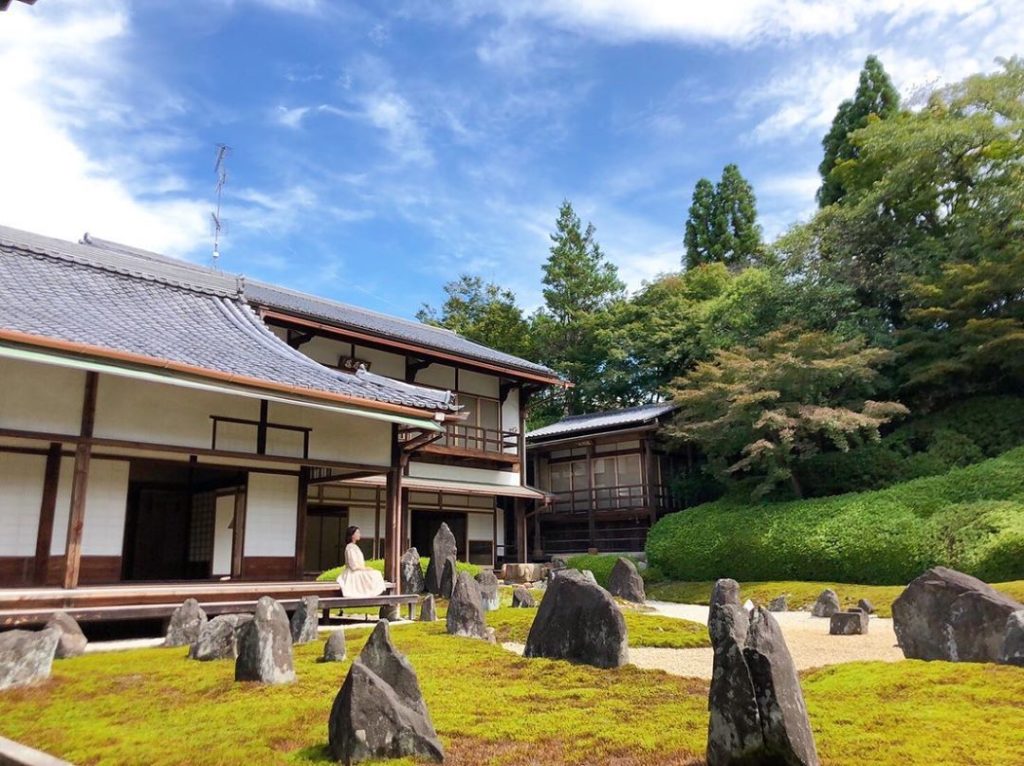
Image credit: @sk_p25
Most Kyoto itineraries include Tōfukuji, a large Buddhist temple known for its magnificent fall foliage. But for somewhere off the beaten path, a 5-minute walk from the famed Tōfukuji will bring you to Kōmyōin, where you’ll be able to escape the horde of tourists for some tranquility and peace.
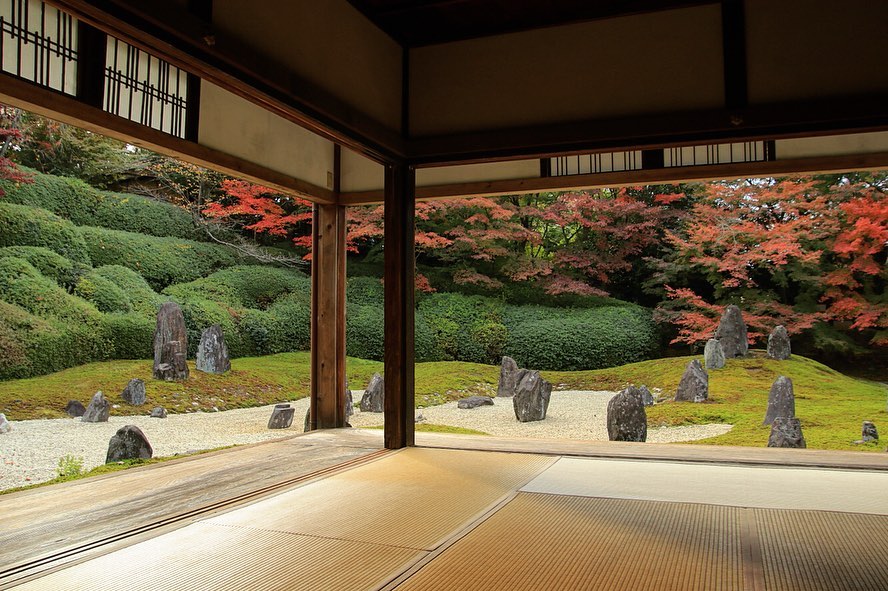
Image credit: @shotaro_ajisaka
Besides being close to the main temple of Tōfukuji, Kōmyōin also has an exquisite garden. Designed by Mirei Shigemori in 1939, a renowned designer of Japanese gardens who is famous for his skillful use of stones and moss, the garden – 波心の庭 (Hashin no Niwa) – literally means the “garden of the mind of the waves”.
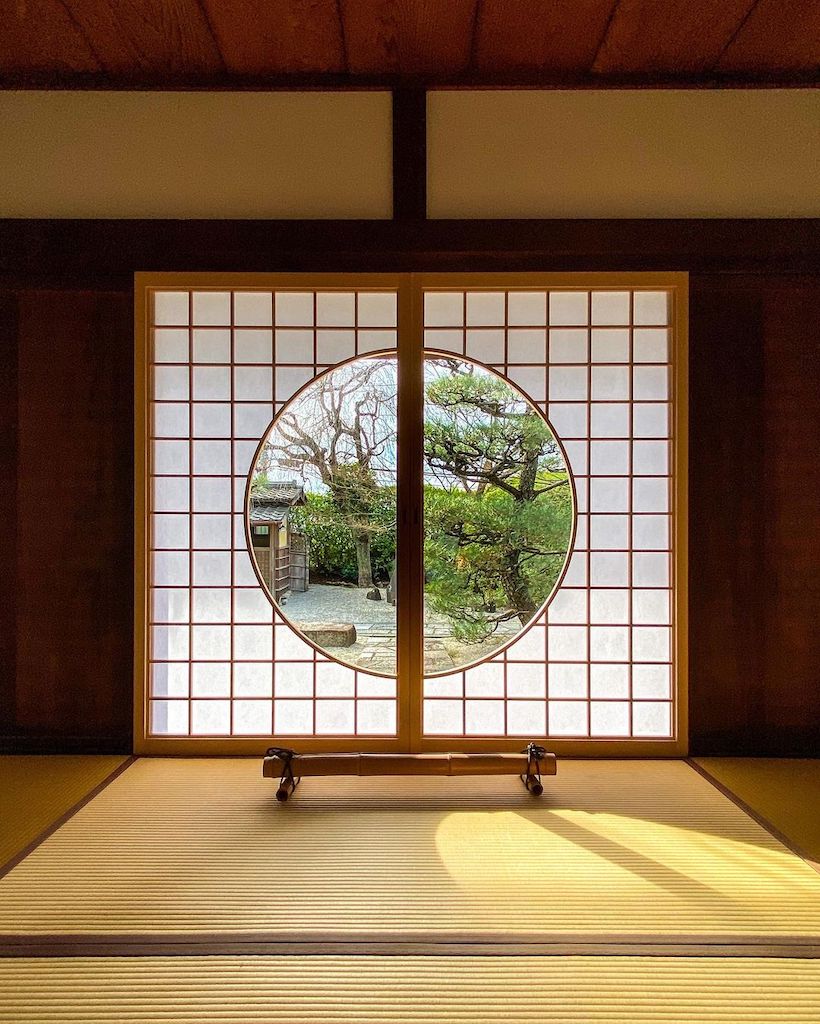
A round shoji window which overlooks the garden.
Image credit: @spvjorn
There are numerous traditional Japanese rooms where visitors can admire the temple’s Zen garden from and slowly unwind. A total of 75 stones of varying sizes are set atop the bed of white gravel and moss in the garden, but look out for 3 sets of stones that are purposefully arranged in groups of threes to make them appear as though they emit light.
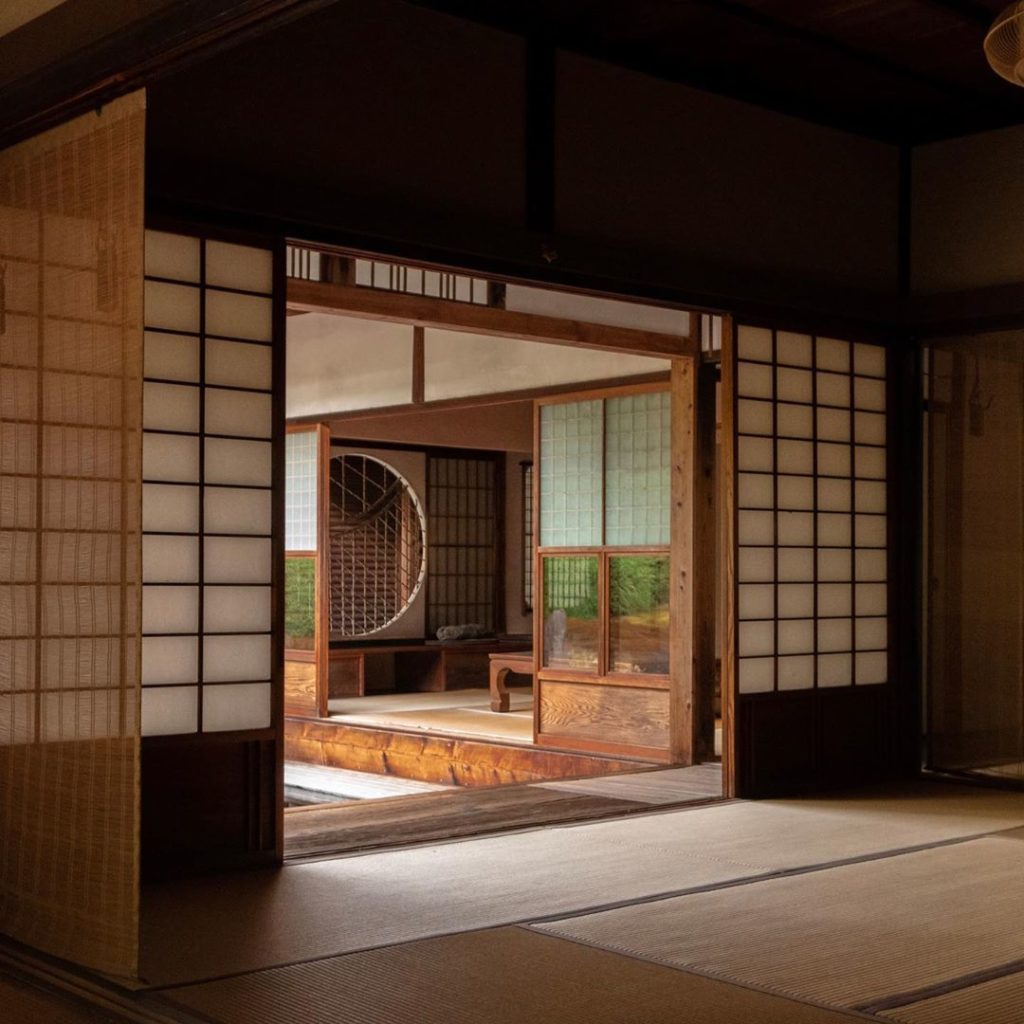
Shoin, a study room in the Buddhist temple.
Image credit: @ao_sorano
In the early summer months, an array of blooms – satsuki azaleas, bellflowers, and more – dye the garden in stunning hues of colour. The garden has thus earned the unofficial nickname of 虹の苔寺 (Niji no Koke-dera), which translates to “rainbow moss temple”.
Kōmyōin
Opening hours: 7AM-Sunset, Daily
Address: 15 Chome-809 Honmachi, Higashiyama Ward, 605-0981, Kyoto
Admission tickets: ¥300 (~USD2.86)
Telephone: 075-561-7317
3. Sub-temples of Daitokuji
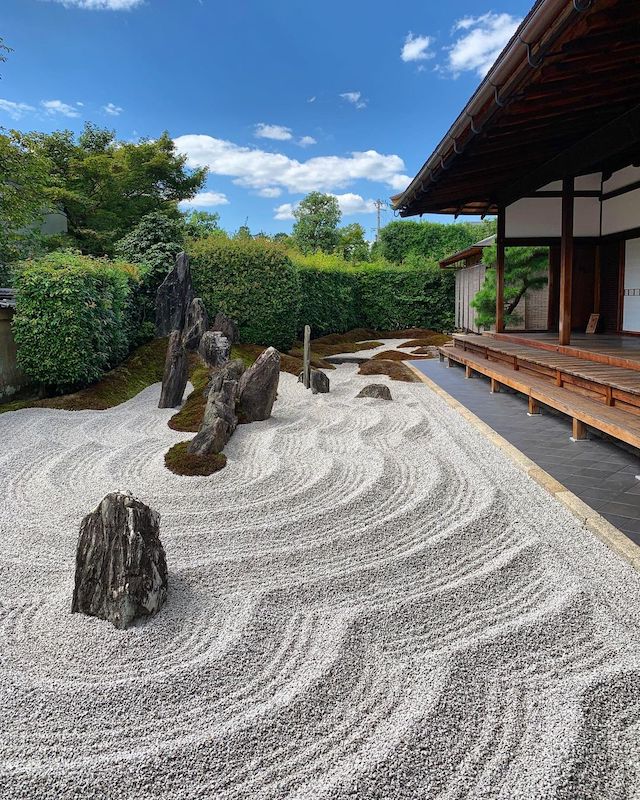
Zuihō-in’s Zen garden.
Image credit: @konnicheewah
For those who’d like to spend a day rock garden–hopping, check out the ones nestled within Daitoku-ji’s sub-temples. While they are all Zen gardens, the varying layout and arrangement convey drastically different meanings.
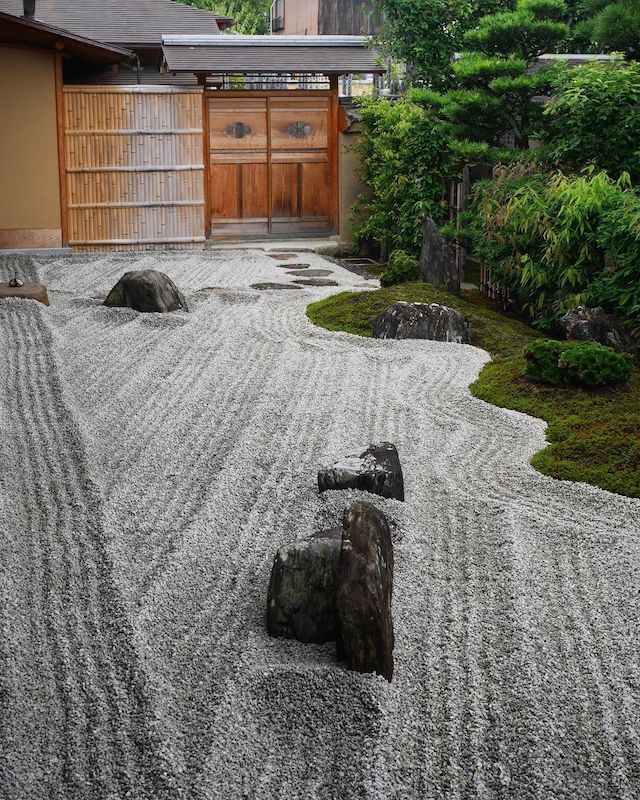
Zuihō-in’s zen garden.
Image credit: @yumichanq
Zuihō-in’s rock garden is characterised by its vigorously raked gravel, as well as the placement of sturdy pointed boulders and flat stones to convey the motion of turbulent waves and rough seas.
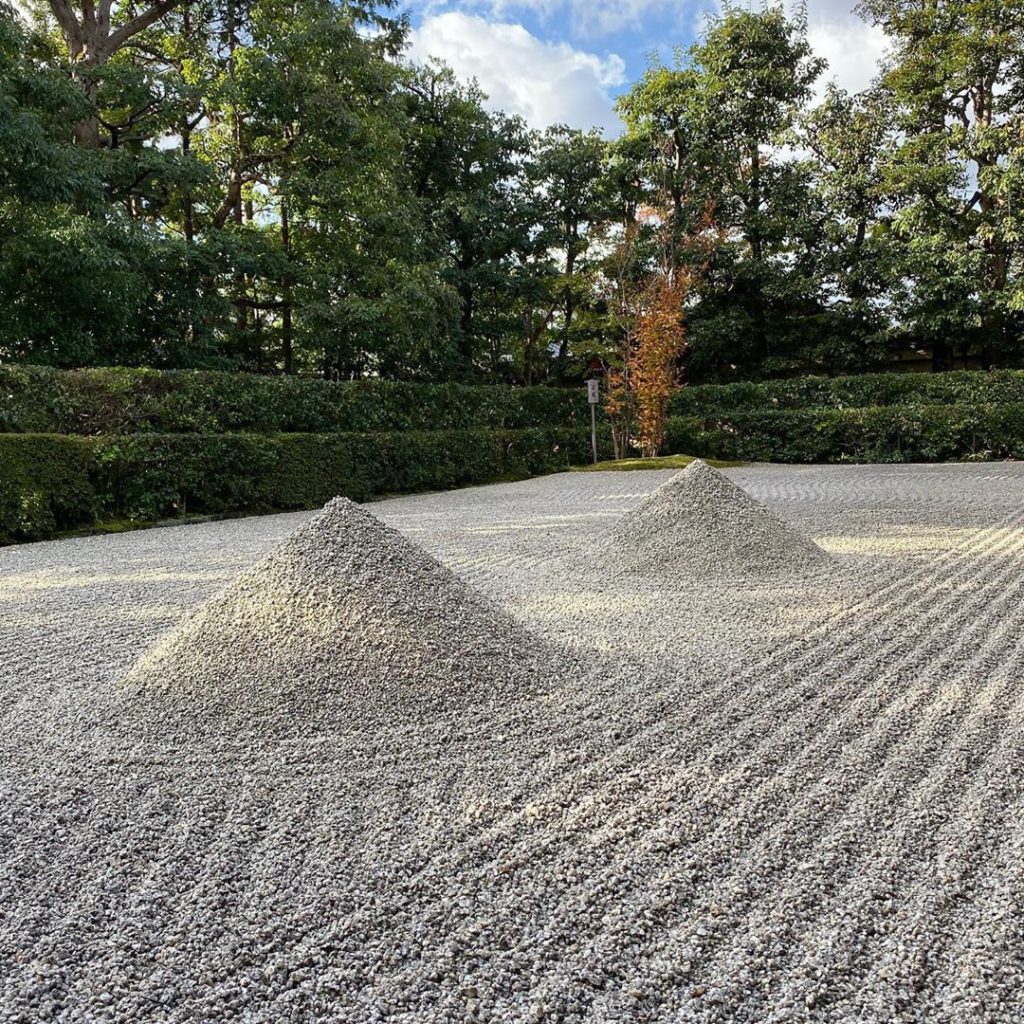
Part of the garden at Daisen-in.
Image credit: @daisen_in_official
Hop on over to Daisen-in for a selection of beautiful gardens dotted around the temple premise. The main highlight, however, is its 2 cone-shaped mountains of gravel.
There are a few ways to interpret the meaning of this garden. Some experts believe that the pile of gravel mimics mountains, while more abstract explanations interpret them as obstacles to overcome in order to attain enlightenment.
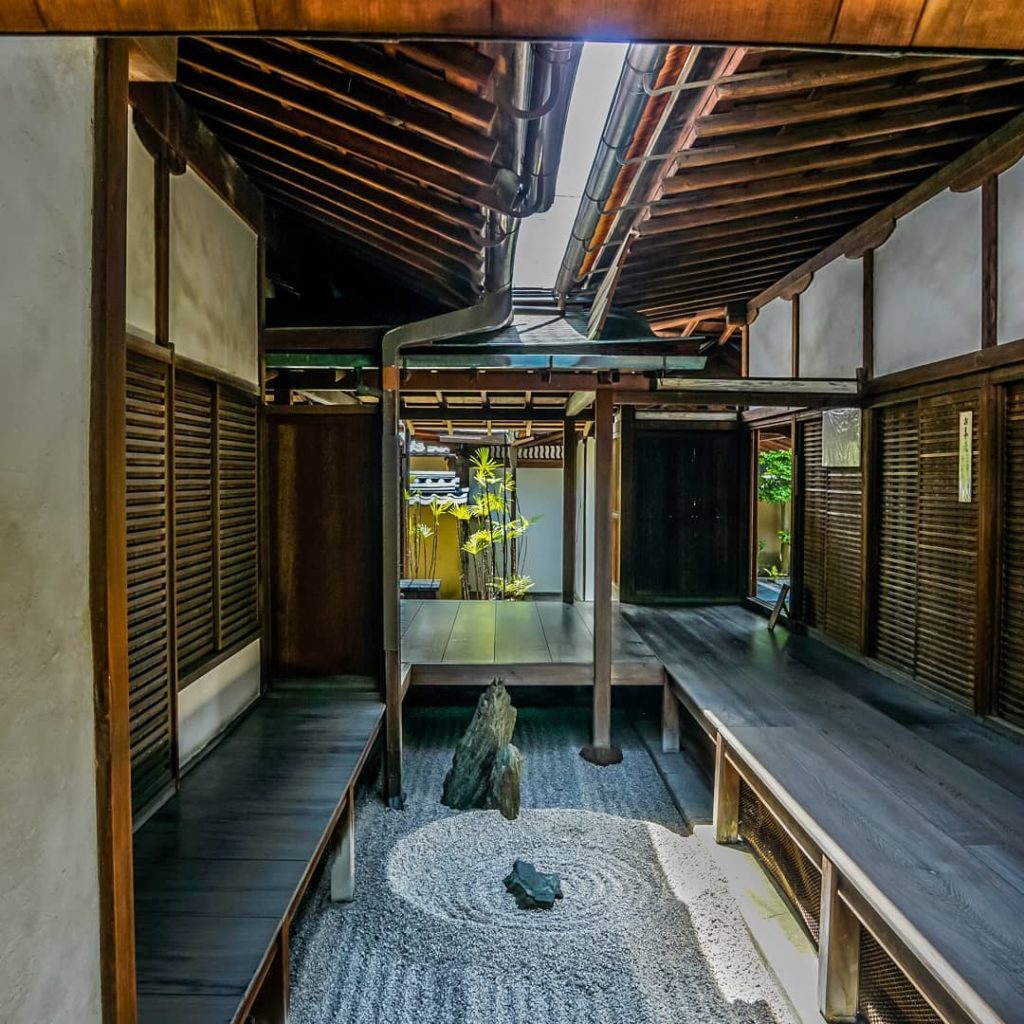
Part of Ryōgen-in’s Zen garden.
Image credit: @enjoy_photo_life
To end the day on a high note, stop by the rock gardens in Ryōgen-in, which is supposed to symbolise a microcosm of the universe.
Zuihō-in
Opening hours: 9AM-5PM, Daily
Address: 81 Murasakino Daitokujicho, Kita Ward, 603-8231, Kyoto
Admission tickets: ¥400 (~USD3.82) for adults, ¥300 (~USD2.86) for children
Telephone: 075-491-1454
Daisen-in
Opening hours: 9AM-5PM, Daily
Address: 54-1 Murasakino Daitokujicho, Kita Ward, 603-8231, Kyoto
Admission tickets: ¥400 (~USD3.82)
Telephone: 075-491-8346
Ryōgen-in
Opening hours: 9AM-4.30PM, Daily
Address: 82-1 Murasakino Daitokujicho, Kita Ward, 603-8231, Kyoto
Admission tickets: ¥300 (~USD2.86)
Telephone: 075-491-7635
4. Manshuin Monzeki
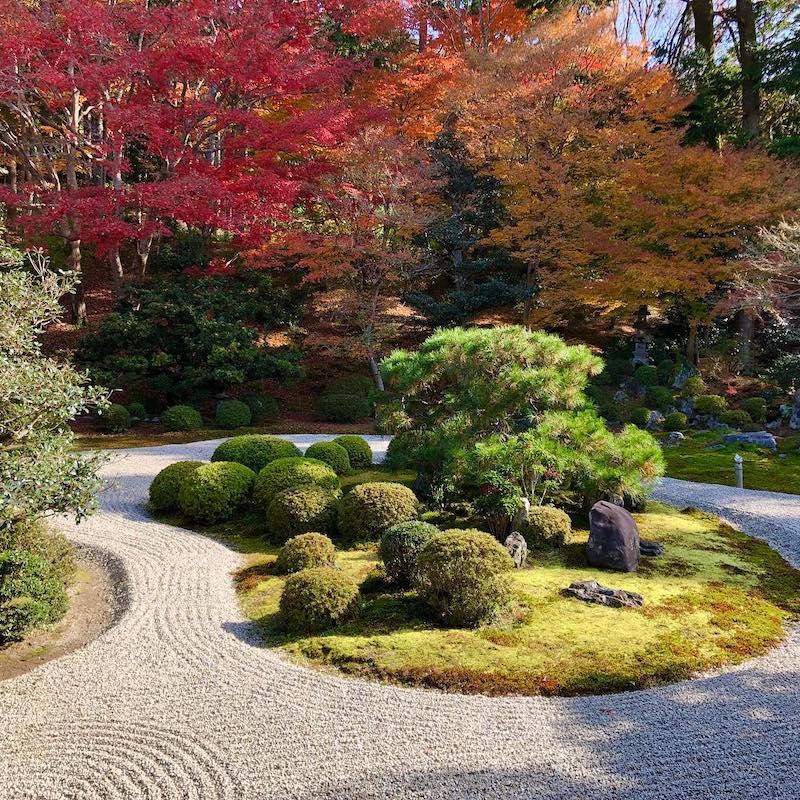
Image credit: @tomo.photos
Located near the foot of Mount Hiei, away from the hustle and bustle of the city, Manshuin Monzeki is a Buddhist temple whose head priests were said to be of aristocratic descent. The temple’s origins date back to as early as the 8th century.
Today, its beautiful garden is recognised by the Japanese government and has been designated the title of “National Places of Scenic Beauty” (史跡名勝天然記念物).
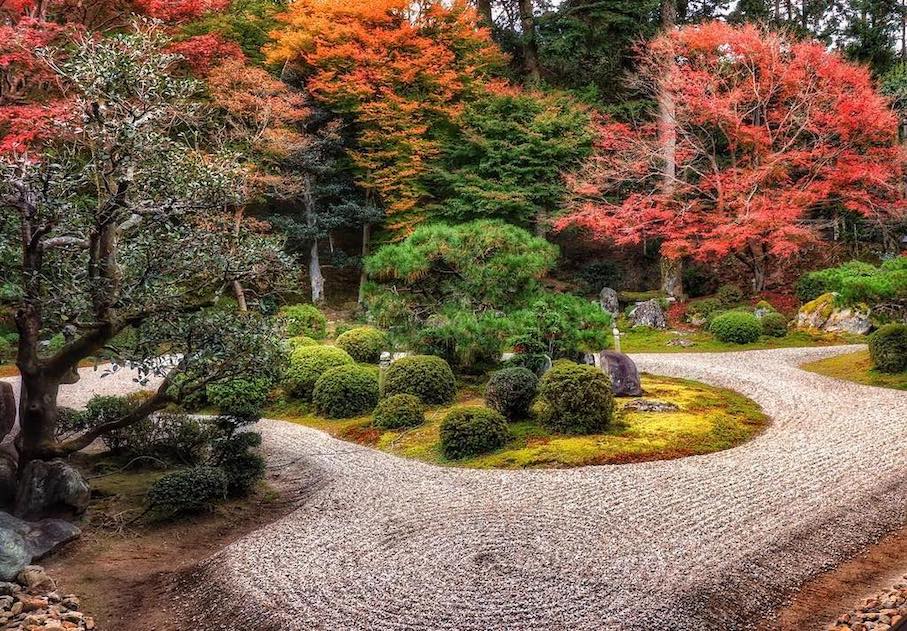
Image credit: @hinami0109
Like most temples, the rooms in Manshuin Monzeki retain a traditional Japanese style with tatami covered floors and fusuma (襖, sliding doors).
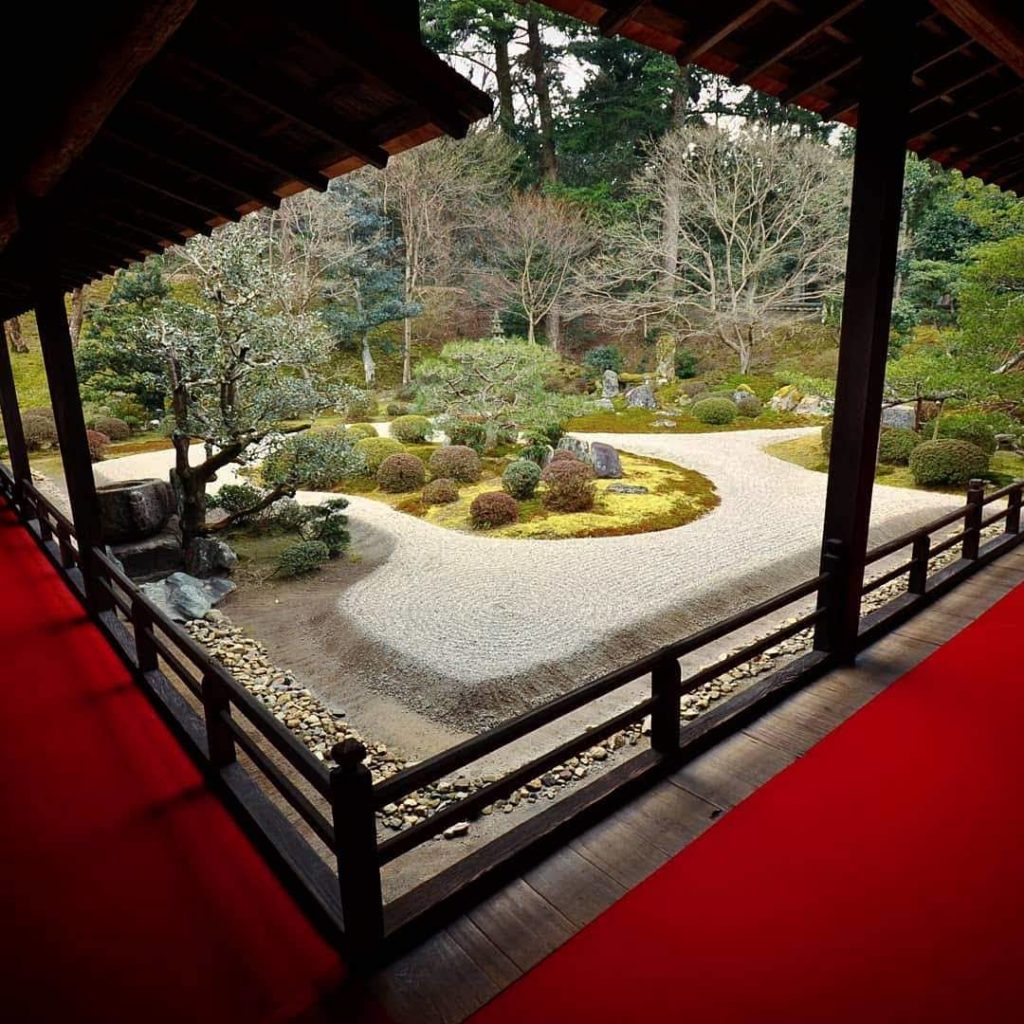
Image credit: @kyoto_channel
Besides the well-preserved architecture, the temple’s major garden is a highlight not to be missed. There are two “islands” – Kamejima and Tsurushima – situated among the white “sea”, as represented by the raked gravel. One of the islands, Tsurushima, houses a 400-year-old Japanese white pine.
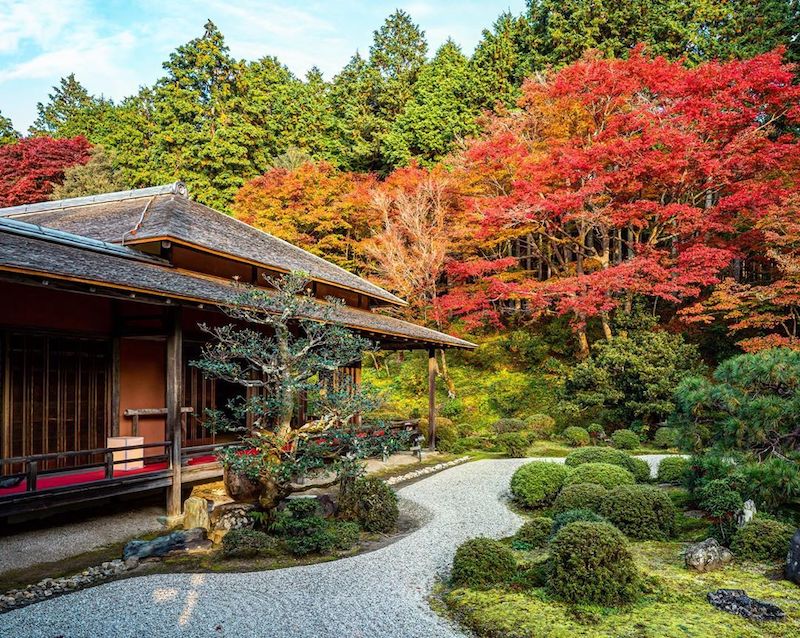
Image credit: @activeu
Manshuin Monzeki is worth a visit any time of the year, but the garden is particularly breathtaking in autumn, with vibrant fall colours juxtaposed with the raked white gravel and evergreen trees. Early May is also a good time to drop by. Visitors can get to enjoy Kirishima azalea, camellias, and cherry blossoms in all their glory.
Manshuin Monzeki
Opening hours: 9AM-5PM, Daily
Address: 42 Ichijoji Takenouchicho, Sakyo Ward, 606-8134, Kyoto
Admission tickets: ¥600 (~USD5.73) for adults, ¥500 (~USD4.78) for high school students (16-18 years old), and ¥400 (~USD3.82) for children (under 15 years old)
Telephone: 075-781-5010
– Wakayama Prefecture –
5. Banryūtei, Kongōbuji
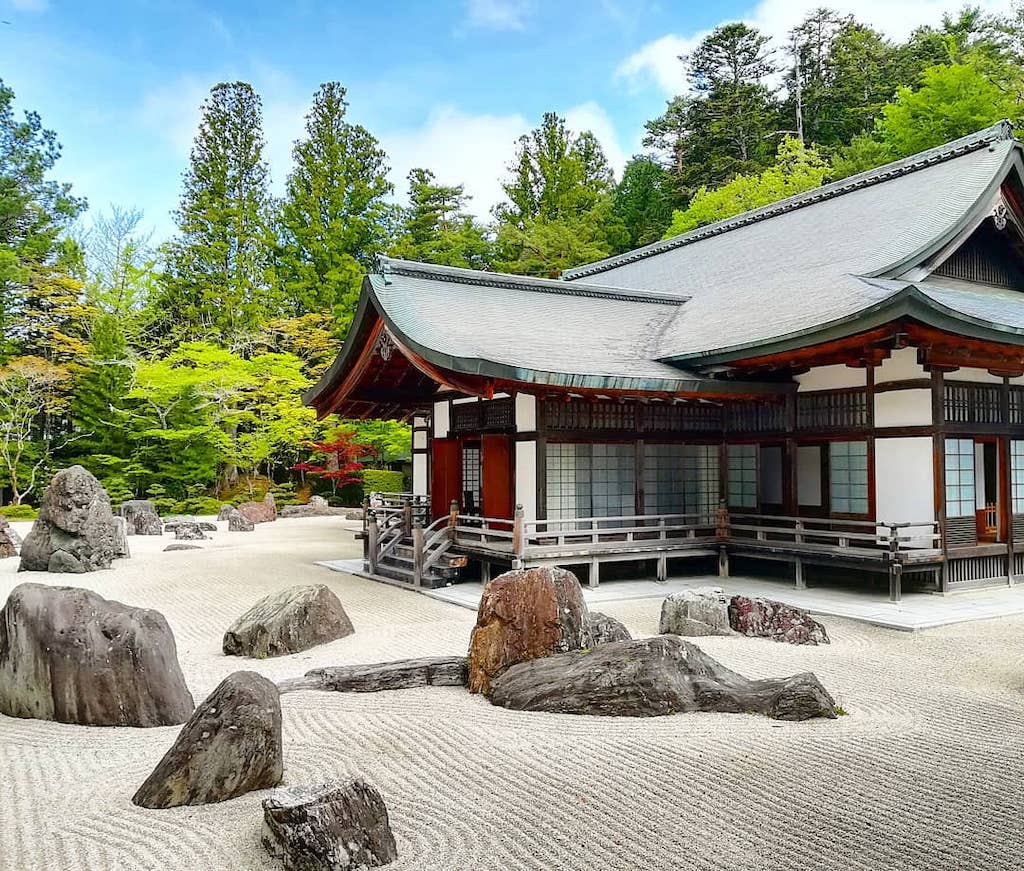
Image credit: @33koubou
With an area spanning 2,340 sqm, the Banryūtei rock garden is the largest rock garden in Japan.
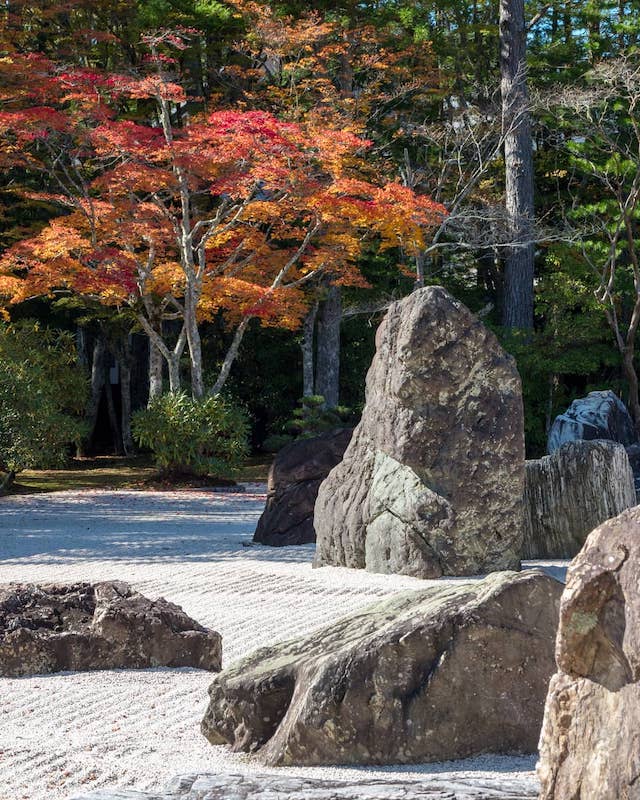
Image credit: @kyoto__guide
The garden is located in Kongōbuji, the head temple of Shingon Buddhism, which is regarded as one of the most important sites in the sacred mountain of Kōyasan.
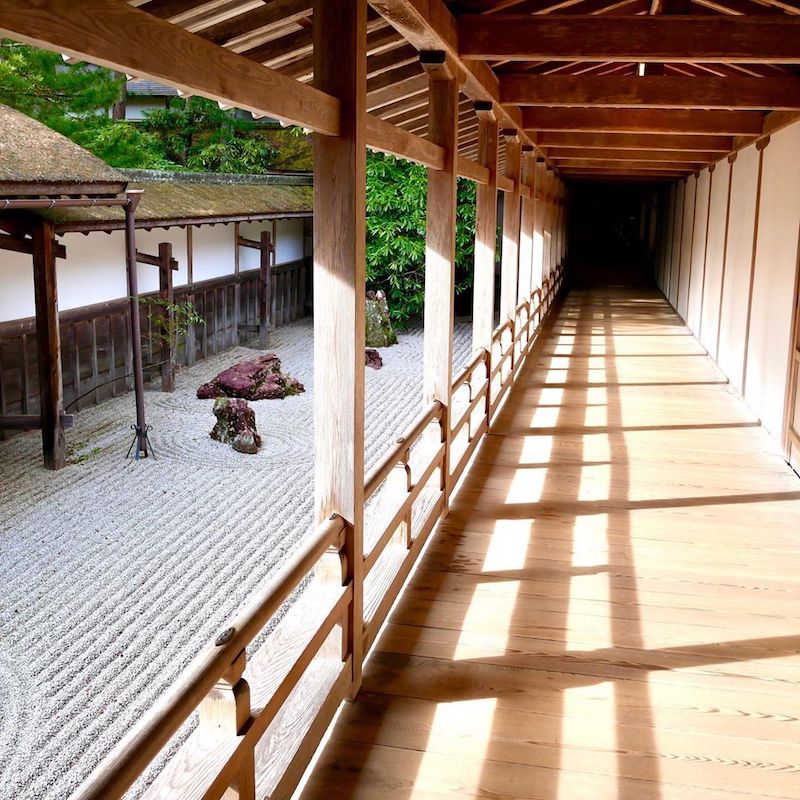
Image credit: @ryo2715_k
History buffs will be thrilled to know that the temple was constructed by Toyotomi Hideyoshi, one of the Great Unifiers of Japan, in 1593. It was later rebuilt and renamed “Kongōbuji” in the 1860s.
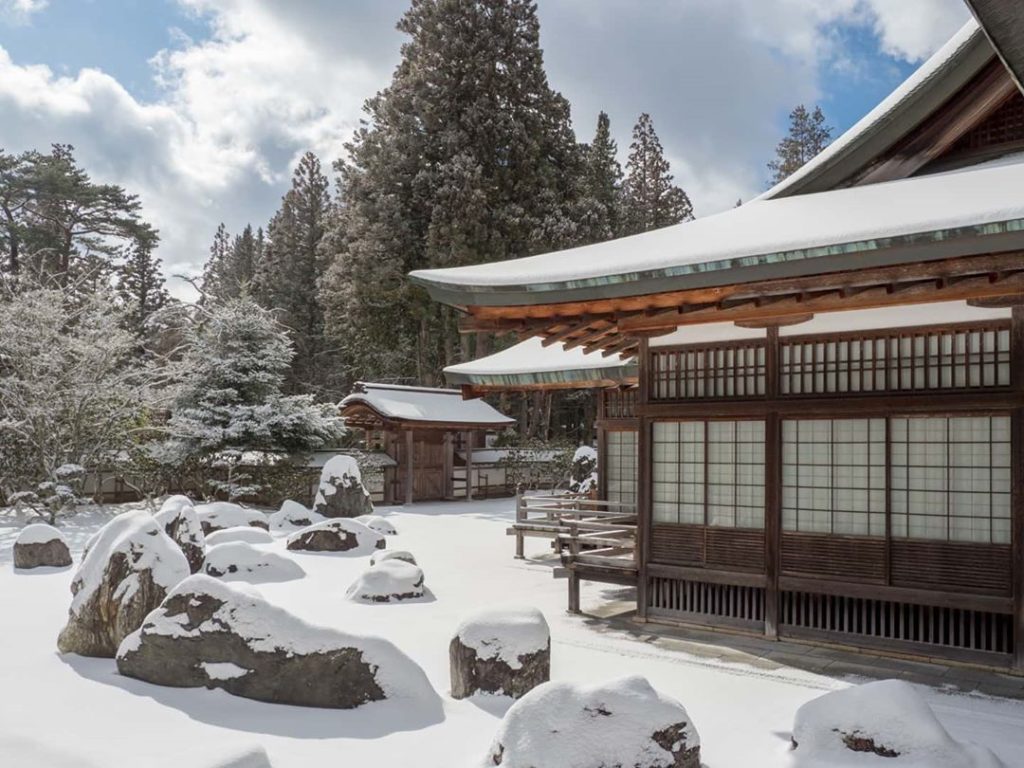
Image credit: @kyoto__guide
Banryūtei boasts 140 granite stones which were made in Shikoku – the birthplace of Kūkai, an influential monk from the Heian Period. The stones are meticulously arranged around the premise to paint a vivid picture of a pair of dragons as guardians of the temple breaking through a sea of clouds.
Banryūtei
Opening hours: 8.30AM-5PM, Daily
Address: 132 Koyasan, Koya, Ito District, 648-0294, Wakayama
Admission tickets: ¥500 (~USD5.73)
Telephone: 0736-56-2011
Website
– Yamaguchi Prefecture –
6. Kanyōji
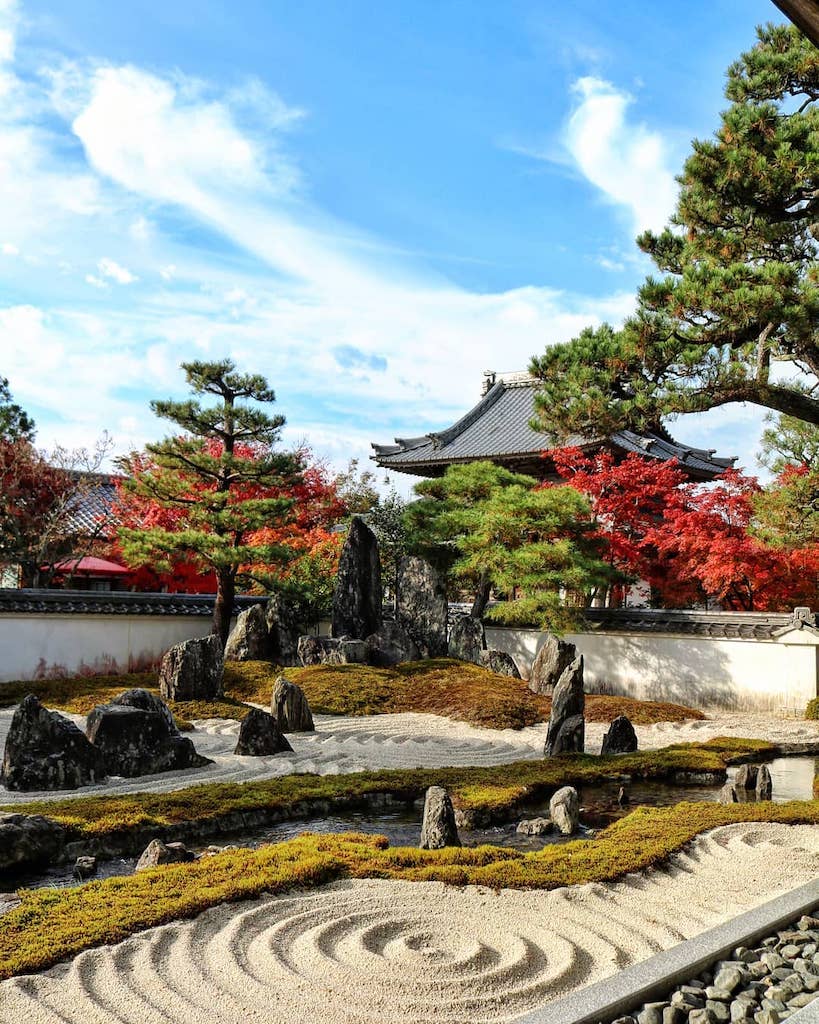
Kyokusui no Niwa, the main garden of Kanyō-ji, in front of the temple’s main hall.
Image credit: @ponchan_6072
For a truly otherworldly experience that is off-the-beaten-path, visit the Zen garden of Kanyō-ji, located in Shunan City of Yamaguchi Prefecture.
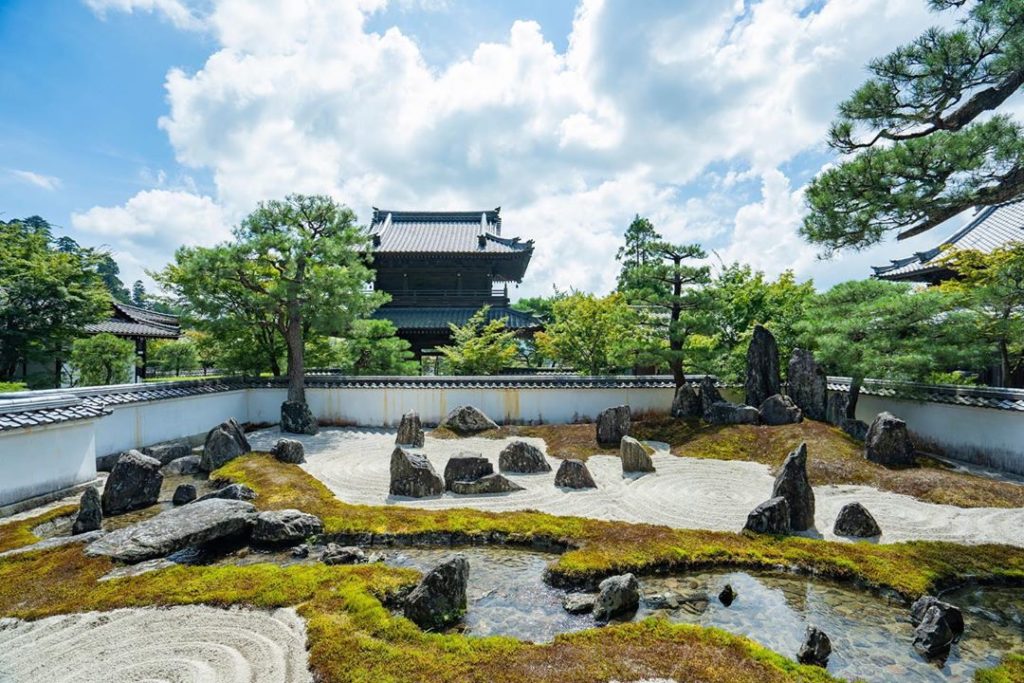
Overview of Kyokusui no Niwa
Image credit: @oidemase_yamaguchi
The place is not the most accessible – visitors must be prepared to spend an hour on local buses from the nearest train station. However, rest assured that it will be well worth the journey.
Kanyō-ji has stayed under the radar not just for seasoned foreign visitors, but also natives. You can thus experience real serenity as the temple won’t be as crowded as many of the more famous Zen gardens in Japan.
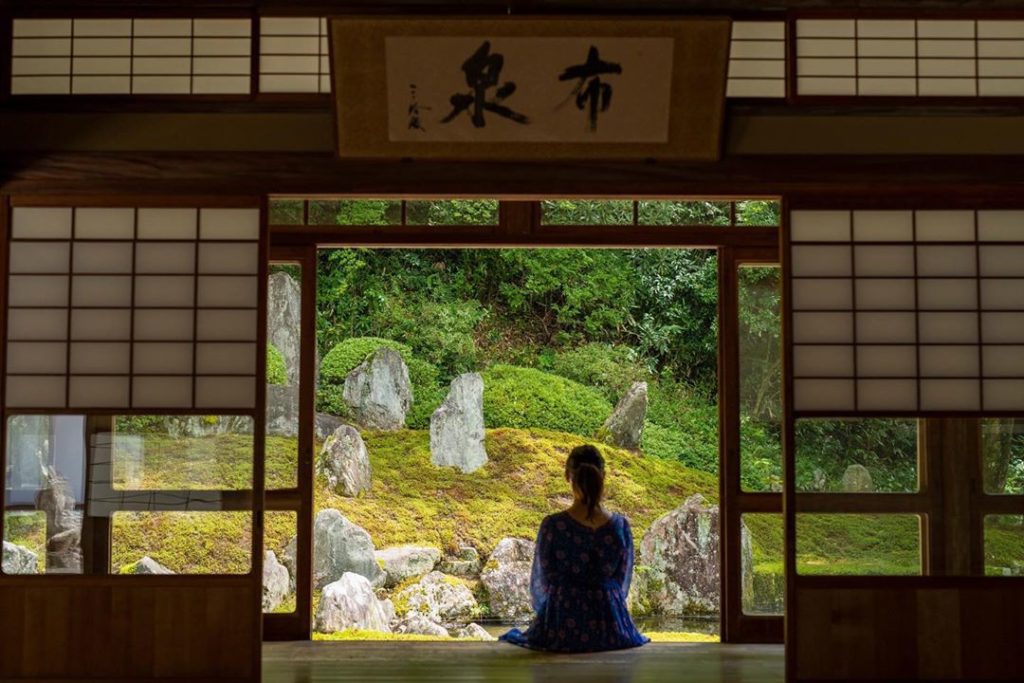
Image credit: @oidemase_yamaguchi
Take your time to appreciate the different and distinctive garden designs, all of which reflect and represent various eras throughout Japanese history.
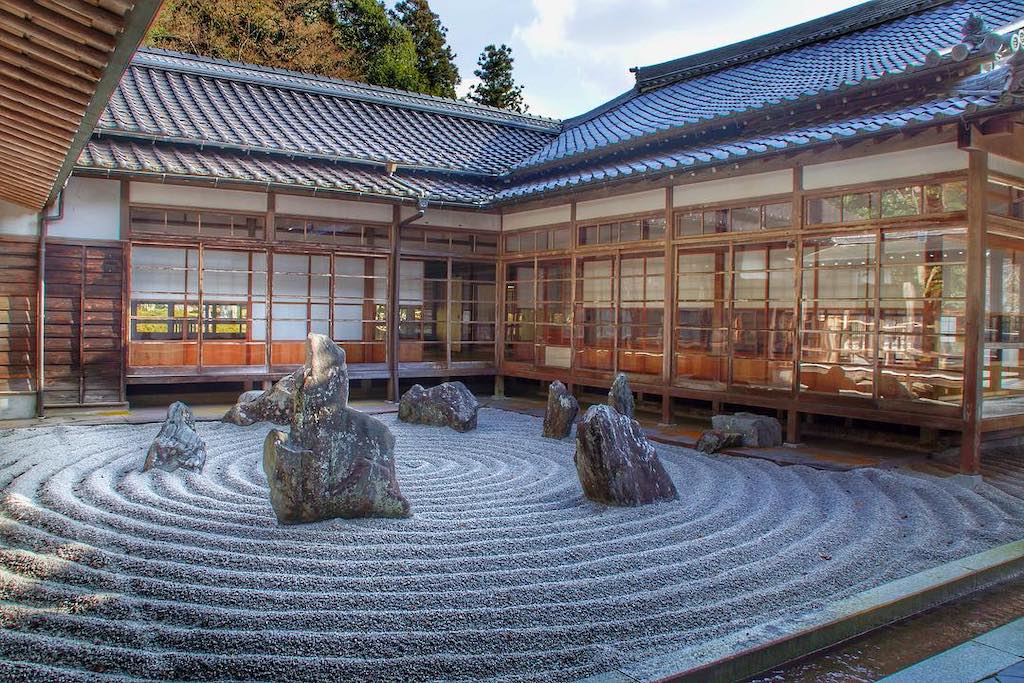
Image credit: @naturalhigh335
Visitors can trace the history of Japanese gardens by comparing garden styles from as early as the Heian era to the Kamakura and Momoyama period. For instance, the temple’s main garden, Kyokusui no Niwa, adopts a garden style in vogue during the Heian period.
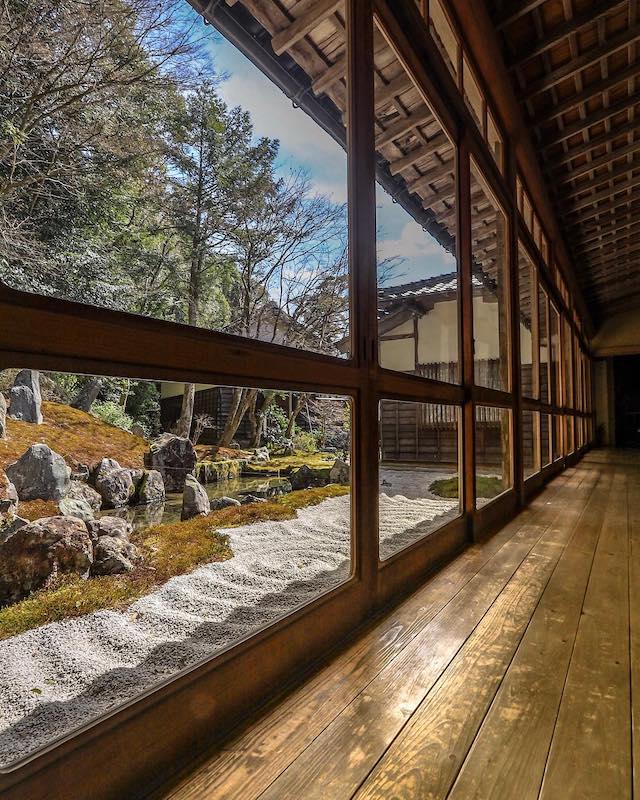
Jizō Yūka no Niwa
Image credit: @ke._.ta1101
Along the corridors, you’ll also find a dry landscape garden by the name of “Jizō Yūka no Niwa”. Unlike the other gardens in Kanyō-ji, Jizō Yūka no Niwa is devoid of any greenery and designed with only white gravel and stones.
Kanyōji
Opening hours: 9AM-4PM, Daily
Address: 2872 Kanokami, Shunan, 745-0302, Yamaguchi
Admission tickets: ¥400 (~USD5.73) for adults, free entry for children under 15 years old
Telephone: 0834-68-2010
Website
7. Sesshutei, Jōeiji
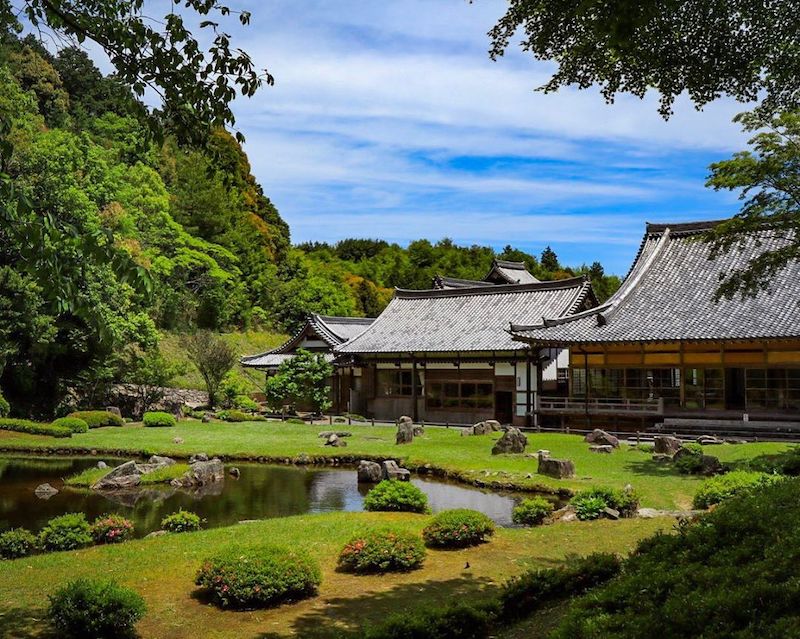
The temple’s main highlight, Sesshutei.
Image credit: @kou.trip.note
Life imitates art in Sesshutei, a Zen garden situated in Jōei-ji, a Buddhist temple located near the outskirts of Yamaguchi City.

Image credit: @kanchan_mb
Created by the revered monk and painter Sesshu, the garden is modelled after one of the painter’s works. It utilises rocks, vegetation, and water to bring Sesshu’s landscape paintings to life. Those with a keen eye for detail will notice that the stones are deliberately arranged upright, a feature of garden design that is representative of the Muromachi period.
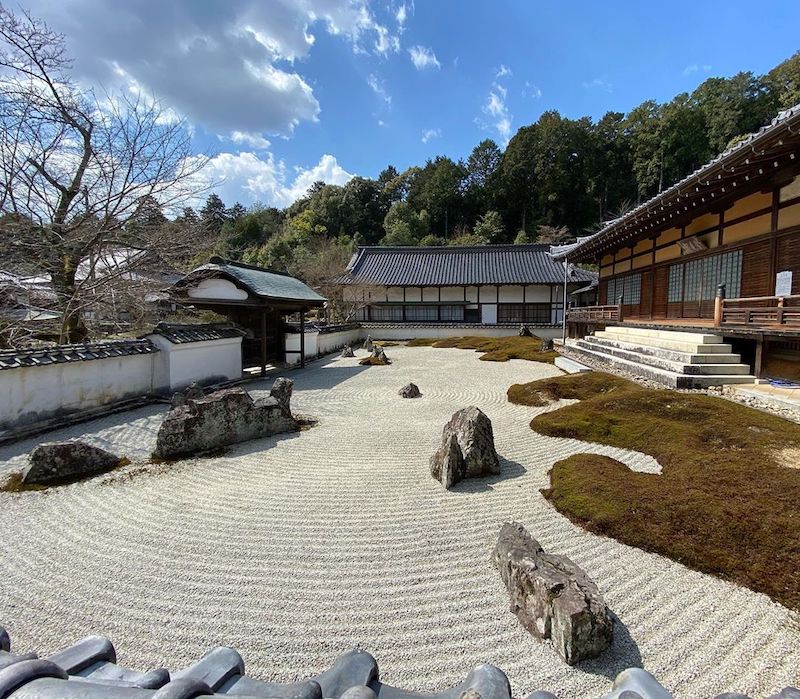
Image credit: @frogprof
Visitors are welcome to take in the splendid view of Sesshutei from the temple’s grand main hall. Venture further and take a stroll down the trail path, as you’ll find a pond shaped like the kanji character for “heart” (心, kokoro) in the centre of the garden.
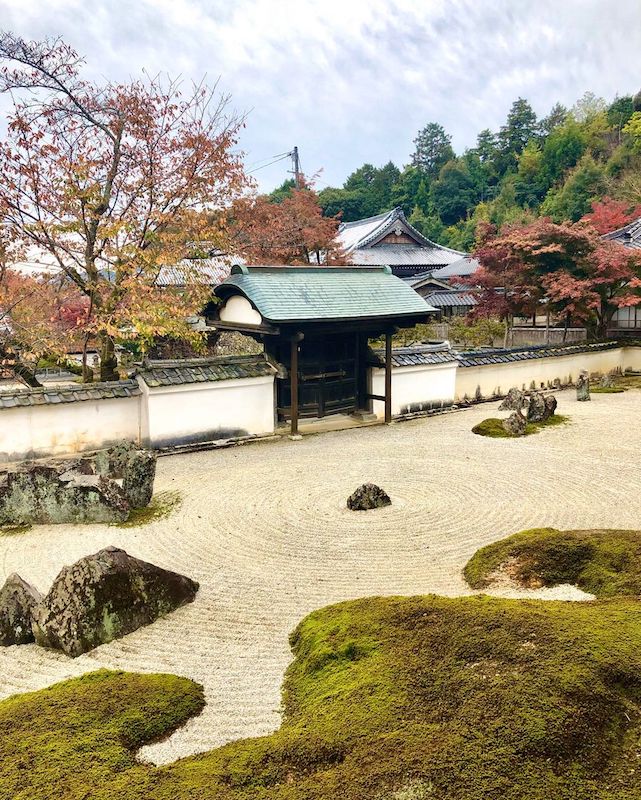
Image credit: @kelly0217key
There are plenty of traditional rock gardens peppered around the temple, so be sure to explore every nook and cranny to make the best out of your visit.
Jōeiji
Opening hours: 8AM-5PM, Daily (Apr-Oct) | 8AM-4.30PM, Daily (Nov-Mar)
Address: 2001 Miyanoshimo, 753-0011, Yamaguchi
Admission tickets: ¥300 (~USD2.87) for adults, ¥200 (~USD1.91) for students (13-18 years old), and free entry for children (under 12 years old)
Telephone: 083-922-2272
Website
– Tokushima Prefecture –
8. Honrakuji
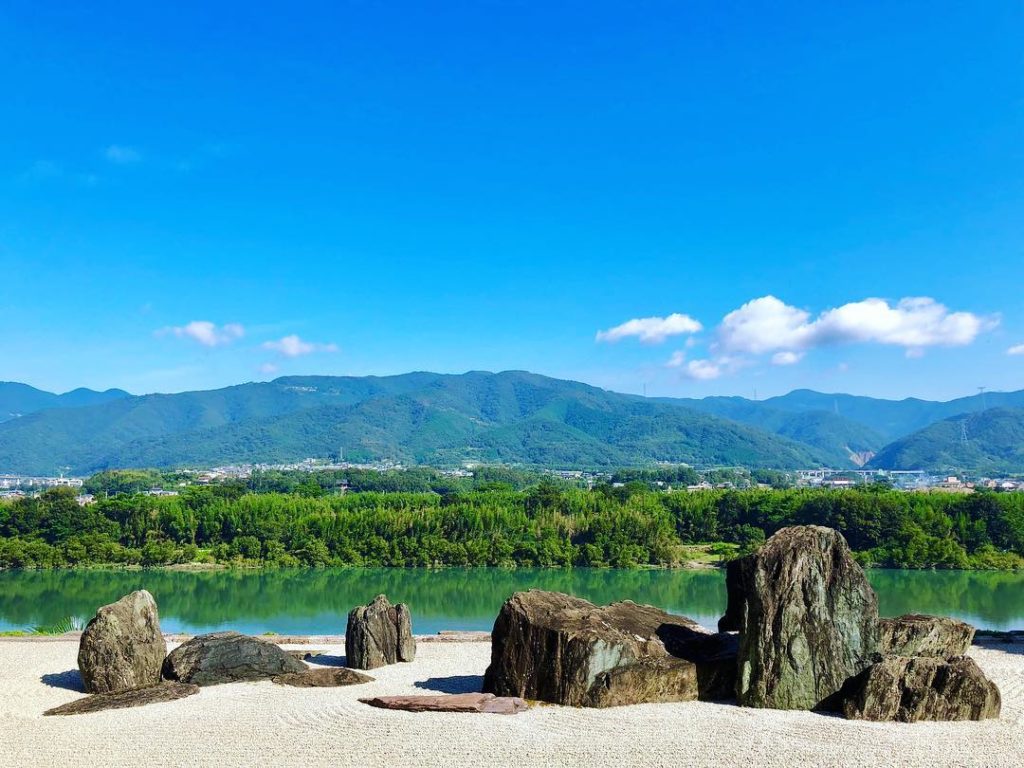
Image credit: @zoic6
Most Zen gardens in Japan make use of raked white pebbles to express the image of sea and water.
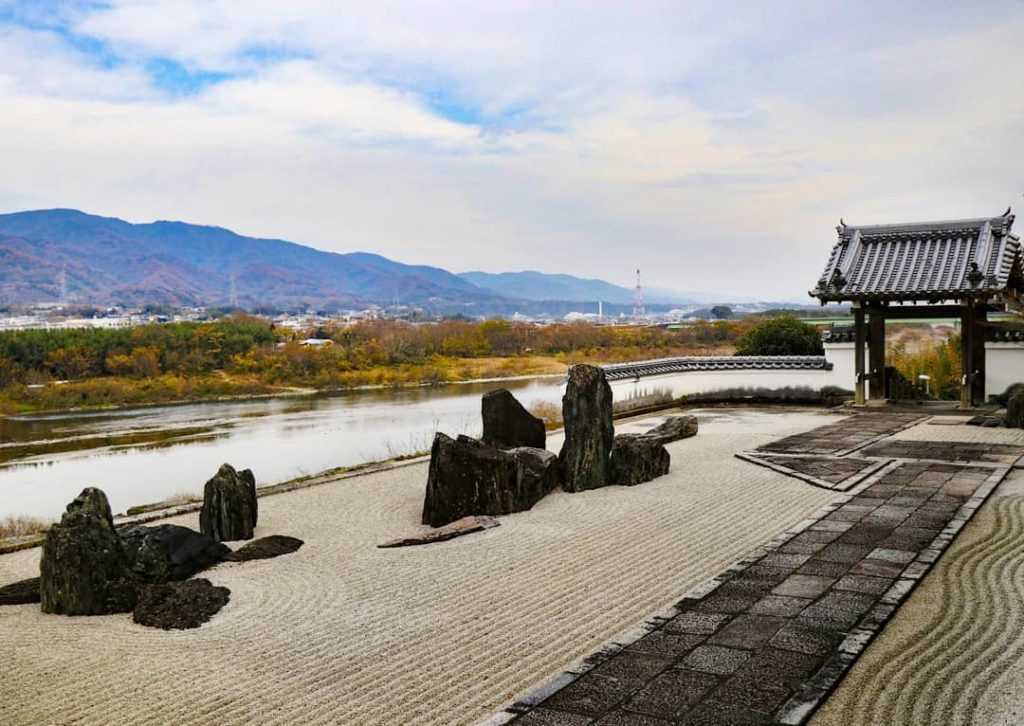
Image credit: @823channel
But the Zen garden at Honraku-ji is one of the rare instances where natural scenery is incorporated – the dry landscape garden is set against the majestic backdrop of Yoshino River and Sanuki Mountains. Here, tired travellers can enjoy the tranquility of both man-made and natural scenery.
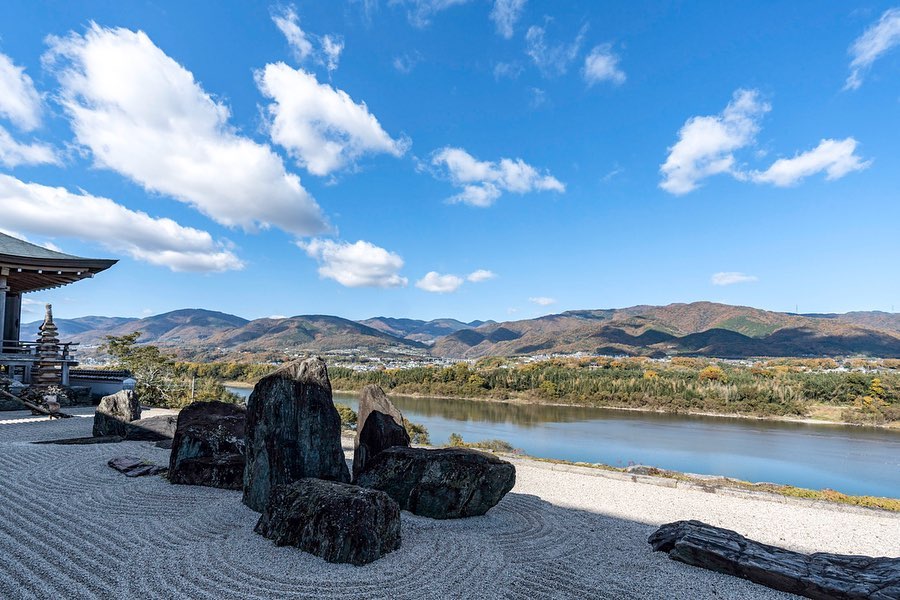
Image credit: @maro_nagashi
After you’ve decluttered your mind at the garden, head over to the temple’s traditional Japanese tea ceremony room – which is just behind the main building – for an authentic cup of matcha (¥300, ~USD2.86).
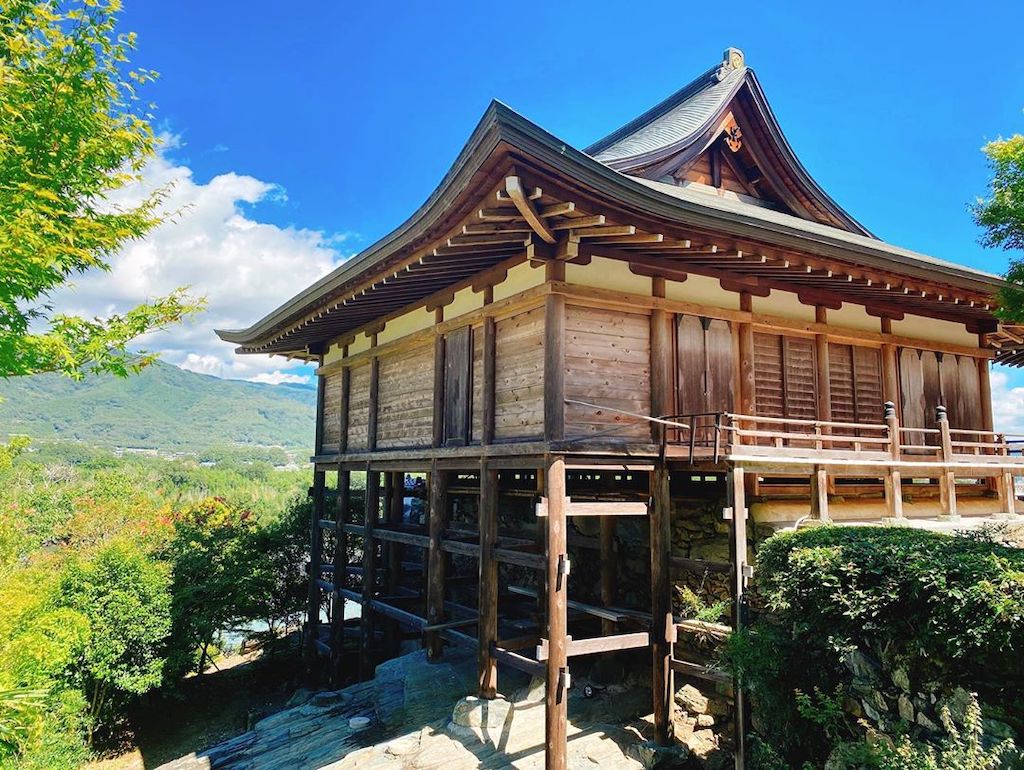
Image credit: @ak.n.n.k.o
Vegetarian kaiseki (traditional Japanese multi-course meal) courses and bentō are also available. They cost ¥6,500 (~USD62.05) and ¥3,800 (~USD36.26) respectively, and reservations have to be made at least 1 week in advance.
Honrakuji
Opening hours: 8AM-5PM, Daily (May-Oct) | 8AM-4.30PM, Daily (Nov-Apr)
Address: Oshima-123 Anabukicho Mishima, Mima, 777-0001, Tokushima
Admission tickets: ¥300 (~USD2.87)
Telephone: 883-52-2754
Website
– Shimane Prefecture –
9. Adachi Museum of Art
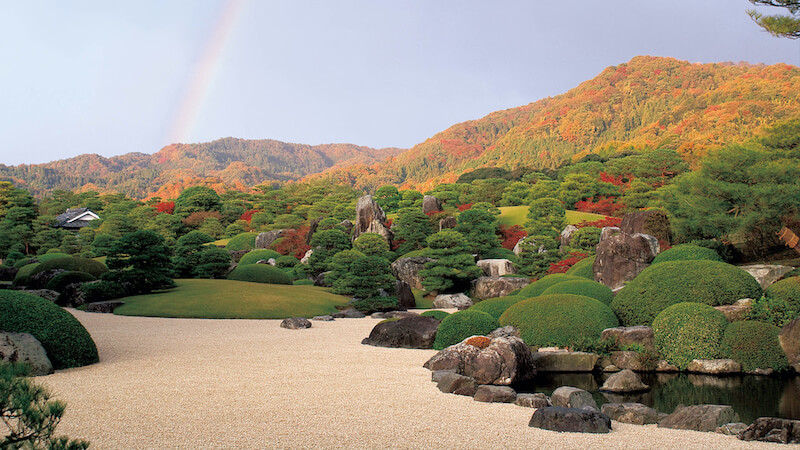
The Dry Landscape garden
Image credit: Adachi Museum of Art
Modern art meets traditional Japanese gardens in the Adachi Museum of Art. Zenko Adachi, the founder, firmly believed that a garden is a living painting. So, he established a museum where art enthusiasts like himself can admire both the beauty of nature and Japanese paintings.
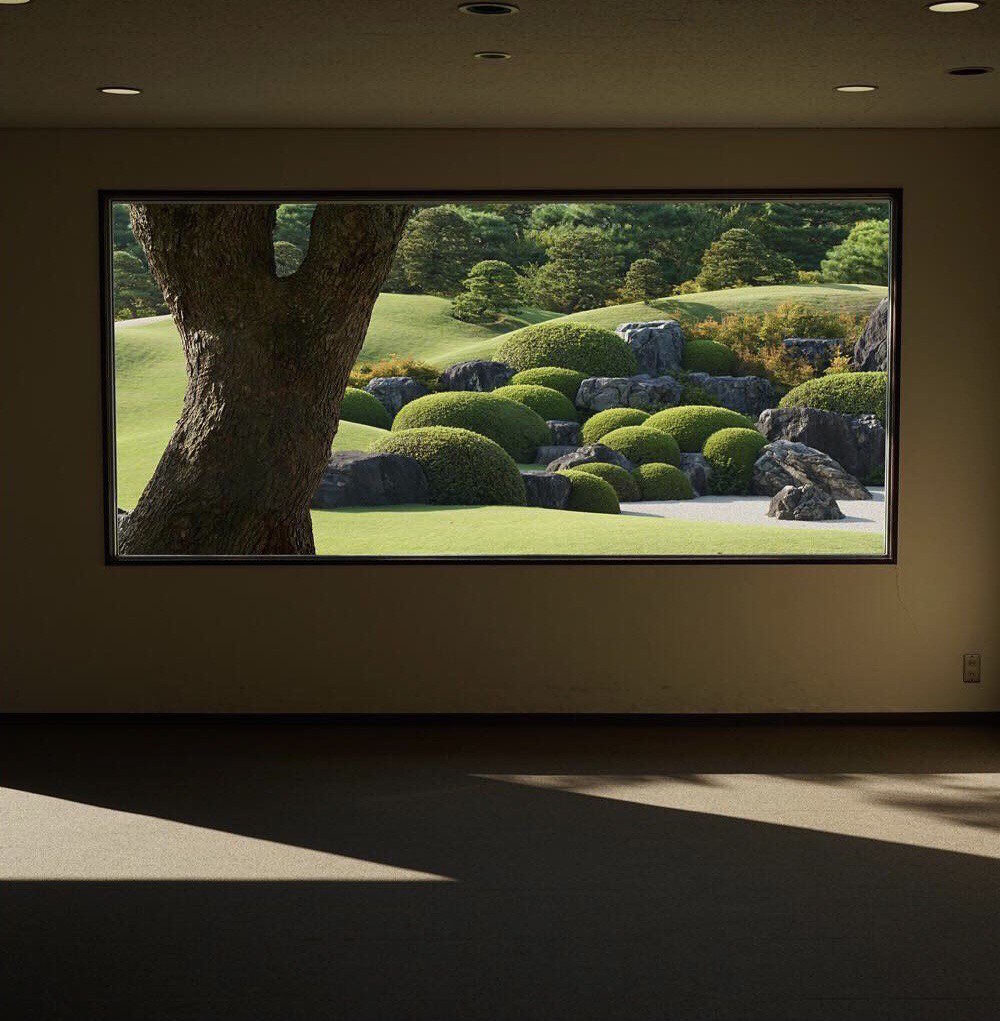
Image credit: @sinmagic3623
Adachi Museum of Art houses masterpieces from renowned modern Japanese artists such as Taikan Yokoyama, as well as pieces such as intricate wood carvings and ceramic art.
Apart from its impressive collection of artworks, the museum is best known for its exquisite Japanese gardens, which spans 165,000sqm – about the size of 23 football fields – in total and surrounds the outdoor premise of the museum.
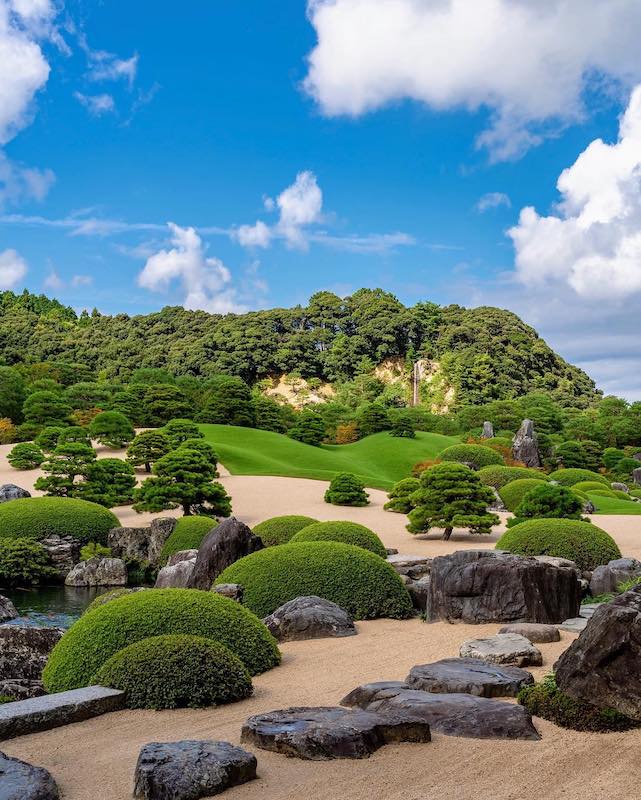
Image adapted from: @letra_mas
You can admire the well-maintained gardens from the “Living Framed Painting” – a large window which offers a panoramic view of the gardens – in the main building. As the vegetation and surrounding mountains change colour according to seasons, the “painting” is ever–changing and takes on a different face every day, making it truly alive.
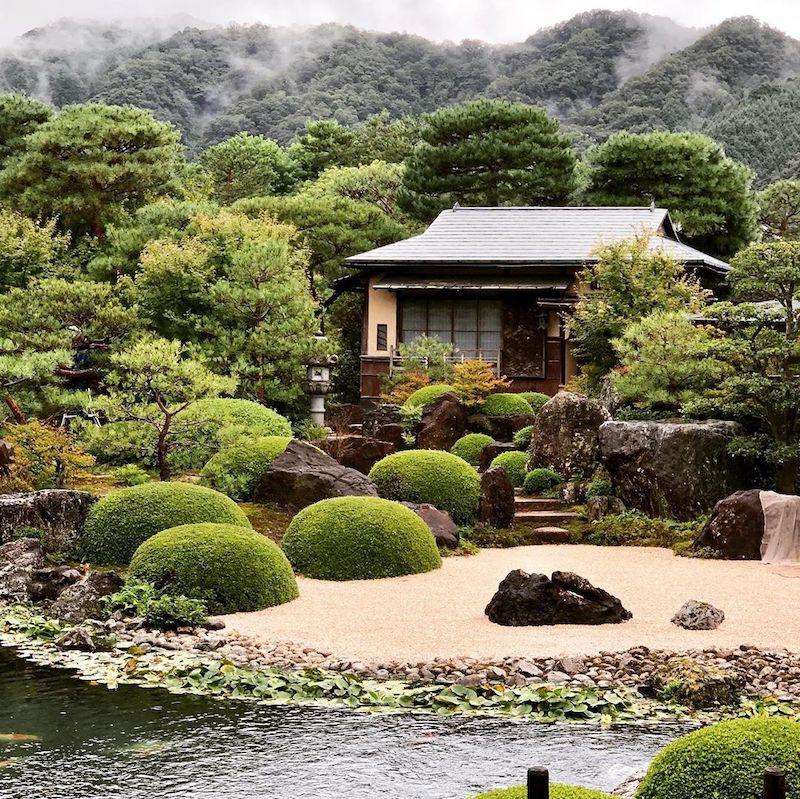
The Pond Garden
Image credit: @zizlina
With numerous accolades to their name – they came in top for 17 years in a row in a ranking conducted by The Journal of Japanese Gardening – the gardens in Adachi Museum of Art are widely considered to be the best in Japan.
If you can’t wait for travel to Japan to officially resume, here’s a live stream of the award-winning gardens. Though it can’t replace being there in person, hopefully this will suffice until borders reopen.
Adachi Museum of Art
Opening hours: 9AM-5.30PM, Daily (Apr-Sept) | 9AM-5PM, Daily (Oct-Mar)
Address: 320 Furukawacho, Yasugi, 692-0064, Shimane
Admission tickets: ¥2,300 (~USD21.98) for adults, ¥1,800 (~USD17.20) for university students, ¥1,000 (~USD9.56) for high school students, and ¥500 (~USD4.78) for elementary or junior high school students
Telephone: 854-28-7111
Website
Japanese Zen gardens
Vermilion torii gates may be stunning sights to behold, but there’s nothing quite like a quiet respite and peacefully unwinding at rock gardens. Switch up your itinerary and add these Japanese Zen gardens to your must-visit list.
For more places to visit in Japan, check out these articles:
- Free Tokyo walking tours
- Kawagoe guide
- Unique Japanese architecture
- Mountains in Japan
- Anime locations IRL
Cover image adapted from (clockwise from left): @typemoto, @zizlina, @kyoto__guide and @zoic6
